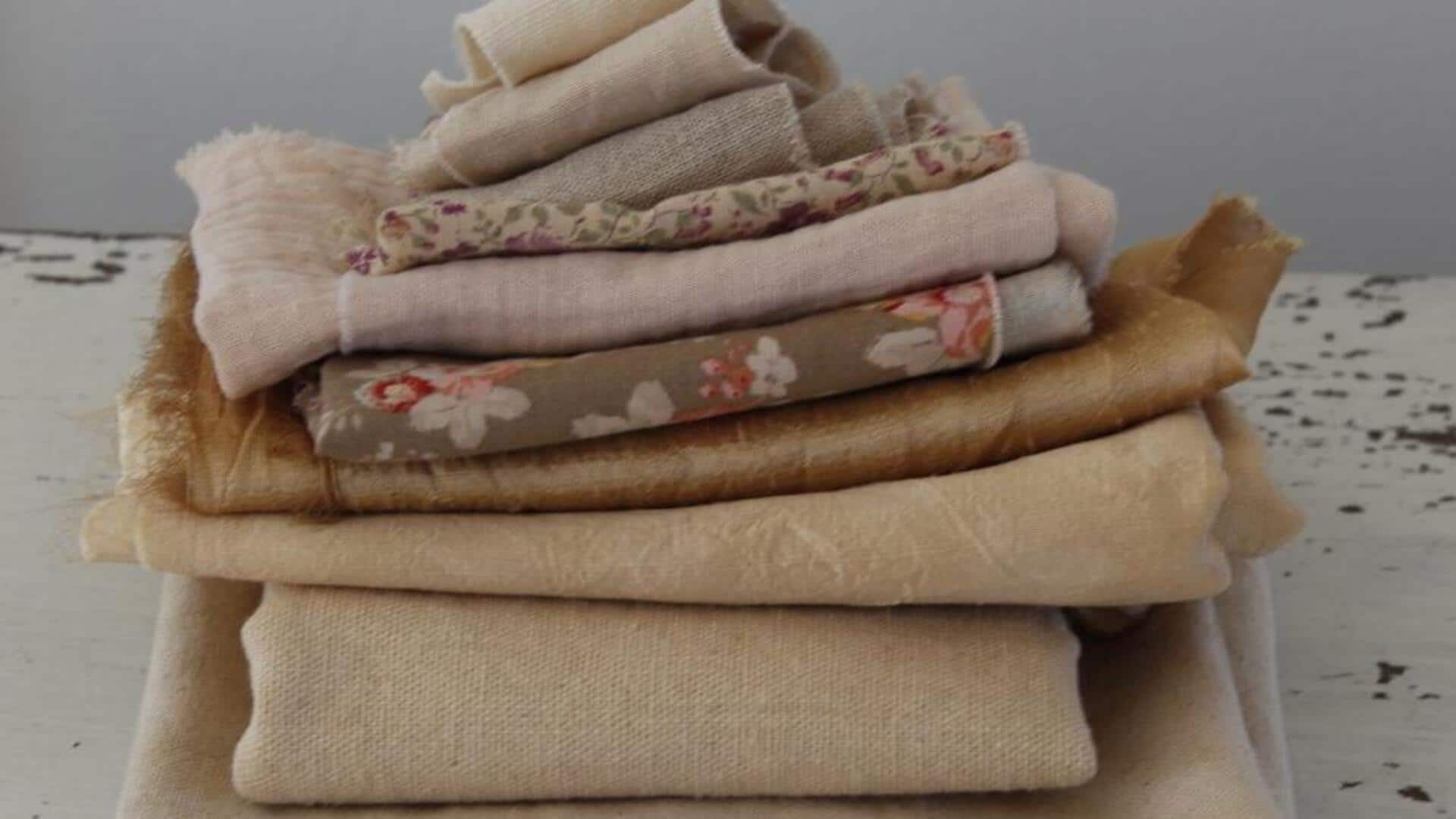
Crafting charm with tea-dyed fabrics
What's the story
Tea-dyeing, a centuries-old craft, breathes life into fabric with a touch of antique elegance, transforming plain textiles into pieces of art with a warm, inviting color. This eco-friendly process offers a sustainable alternative to chemical dyes, while sparking creativity in fashion and home decor. We will explore its rich history, key principles, and hands-on advice for perfecting the art of tea-dyeing.
Background
The history behind tea-dyeing
Tea-dyeing, a centuries-old craft, originated as a practical way to rejuvenate old, stained, or faded fabrics. It became popular among those who couldn't afford new textiles, providing a way to breathe new life into what they already had. What started as a need-based practice eventually transformed into a cherished art form, celebrated for its unique, earth-toned hues.
Key concept
Understanding the basics
Tea-dyeing transforms fabric into beautiful hues of beige, brown, and soft pinks, depending on the tea used. Stronger black teas produce darker shades, while more delicate green teas create lighter hues. This easy process requires attention to fabric preparation, tea strength, and dyeing time to achieve even coloration and the desired effect.
Practical Advice 1
Step-by-step guide to tea-dyeing
Choose natural fibers such as cotton or linen; synthetics won't dye as effectively. Pre-wash fabric to eliminate finishes that prevent dye absorption. Boil water for the dye bath, and add one tea bag per cup of water for a strong solution. Submerge the fabric in the tea bath for a minimum of one hour; the longer, the deeper the color.
Practical advice 2
Achieving even coloration
To ensure even color, gently agitate the fabric during dyeing. Once you've achieved the desired shade, rinse in cold water until the water runs clear. Dry it in a shady spot to prevent uneven fading from the sun. Note: Tea-dyed fabrics will lighten with washing, so choose a slightly darker initial shade. This technique imparts warmth and character to textiles, transforming them into unique, personalized pieces.